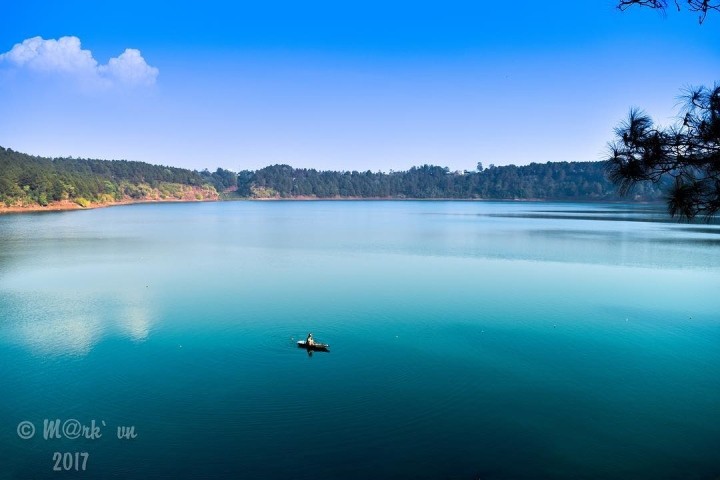Vietnam’s central highlands are fragrant with flowers for much of the year, and home to thundering waterfalls, immense longhouses, and umpteen minority cultures, so it’s something of a surprise that they’re among the least-visited parts of the country. The bulk of travelers shoot along the coast to the east, and even those who prefer mountains to beaches usually head to the larger, more spectacular ranges in northern Vietnam.
With the exception of majestic Da Lat and enjoyably intimate Kon Tum, the appeal of the area lies outside its urban pockets: there are two national parks to choose between, a wealth of minority homestay options, and barely a tourist in sight.
 |
| Photo: quangpato |
Even though Pleiku Sea Lake has been a famous destination in the Central Highlands, this still never ceases to amaze young and adventurous travelers with its natural scenery and great experiences. Every nook and cranny around the lake bed brings a different beautiful picture that you have never seen before, welcoming you into its paradise with open arms.
Pleiku Sea Lake, also known as To Nueng, Ea Nueng, or T’Nung Lake, is located about 7 km from Pleiku, Gia Lai. The lake covers an area of nearly 300 hectares, located at an altitude of about 800 meters above sea level. With an oval shape with clear blue water all year round, Bien Ho is likened to the eyes of the people of the mountain town of Pleiku, the bright pearl of the Central Highlands.
 |
| Photo: markthu_vn |
For tourists who are far away, the best way to get to this place is by plane to Gia Lai and then continue by motorbike or car to get to this lake.
Although the journey is quite complicated and has to move many points, it is probably the most meaningful one on this romantic journey to Pleiku.
 |
| Photo: _damiendinhh_ |
According to scientific researchers, the Sea Lake is formed from a crater that has been dormant for hundreds of millions of years. The lakeside is a high volcanic crater, which visitors can still see clearly from afar. In the rainy season, the water in the lake rises when hundreds of streams pour in, so even in the dry season, the water in Bien Ho never dries up.
Therefore, not only is the lake a scenic spot, but it is also responsible for providing domestic water for the people here.
Welcome the tourists to the Sea Lake is the winding pathway with rows of tall, beautiful pine trees on two sides, which leads up to the poetic scenery of the lake right in front of your eyes.
Pleiku Sea Lake is beautiful every time of the day, but perhaps the most beautiful are the sunrise and sunset.
 |
| Photo: arian_nefallon |
It is said that in the past, the T’nung village was prosperous and the people lived happily and peacefully. Suddenly one day the volcano came down and buried the village. The survivors mourn over their village and their relatives, their tears flowing into the lake, the lake retains the name T’nung as a memory of the village.
A vast open scene with sparkling water waves in the sun, windy clouds, and rolling hills in the distance, embracing the lake to create a vivid ink painting of nature. Colorful flowers and grass grow interspersed in the forests, and the coastal road adds to the wilderness and gorgeousness of the windy and sunny Central Highlands.
 |
| Photo: huynhanh5205 |
One of the best activities is to walk along the lakeside paths, breathe the cool fresh air and enter a peaceful world, separate from the hustle and bustle of normal life. On the strip of land facing the lake bed, there is also a white marble statue of Avalokitesvara Bodhisattva, 15m high, creating a sacred and peaceful space for tourists.
Sea Lake is not only an ideal destination for tourists but also a source of water for the lives of the people in the Pleiku Plateau.
 |
| Photo: Hieu Pham |
It also provides the locals with hundreds of tonnes of fish and shrimp each year. With great natural potential, Sea Lake is considered a gift endowed by nature for the highlanders.
Painting contest held for buffaloes joining ploughing festival in Ha Nam
A buffalo painting contest for the Doi Son Tich Dien (ploughing) Festivalwas held on February 10, or the sixth day of the Lunar New Year in Doi Son commune, Duy Tien district, the northern province of Ha Nam.








